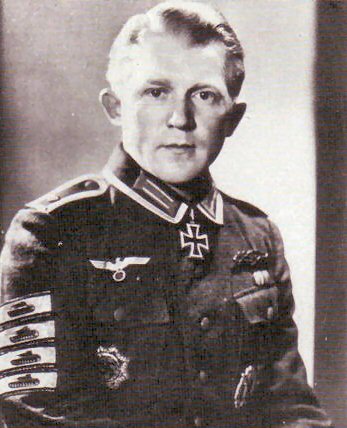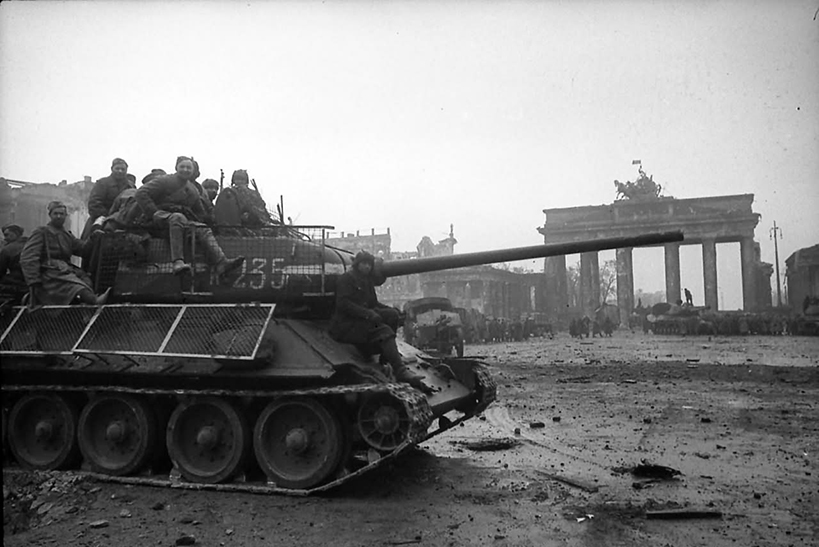Ahrens, Hinrich (Grenadier-Regiment 1141)
- Date of birth:
- March 15th, 1921 (Eickedorf, Germany)
- Date of death:
- December 31st, 2009 (Bremen, Germany)
- Nationality:
- German
Biography
Hinrich Ahrens was born in Eickedorf, Grasberg, Osterholz, Niedersachsen on 21st March 1921. After attending Volksschule, he was educated for working in a mill between 1936 and 1939, until he was drafted into the RAD (Reichs
Arbeits Dienst) on 19th August 1940. After this he worked in France with the
Arbeitseinsatz. On 6th February 1941 he went into military service with 5. / Panzerjäger-Ersatz-Abteilung 20 at Hamburg.
During his service he was wounded on 9th August 1941. After his recovery he
was assigned to the Feld-Ersatz-Battalion X/9 until 25th September. He was
next assigned to 14. / Infanterie-Regiment 301 in the 206.Infanterie-Division. After recovering from several wounds, Ahrens was reassigned to the 13. / Infanterie-Regiment 1141 with the 561.Volks-Grenadier-Division.
After further recovery time at Kriegslazarett 912 bzw. Reserve-Lazarett
Oschatz, he was finally assigned to Ausbildungs-Kompanie 22 at Oldenburg
until the end of the war. At that time he became a Prisoner of War with the
Belgians, remaining in captivity from 28th April to14th September 1945.
Hinrich Ahrens died on 31st December 2009. He was buried on 6th January 2010 at the Stadtfriedhof in Grasberg.
Do you have more information about this person? Inform us!
- Period:
- Second World War (1939-1945)
- Awarded on:
- August 10th, 1942
- Period:
- Second World War (1939-1945)
- Awarded on:
- November 29th, 1942
- Period:
- Second World War (1939-1945)
- Awarded on:
- February 7th, 1943
- Period:
- Second World War (1939-1945)
- Awarded on:
- November 9th, 1943
- Period:
- Second World War (1939-1945)
- Awarded on:
- November 19th, 1943
- Period:
- Second World War (1939-1945)
- Rank:
- Unteroffizier (Junior Officer)
- Unit:
- 14. Kompanie, Infanterie-Regiment 301, 206. Infanterie-Division
- Awarded on:
- April 7th, 1944
- Period:
- Second World War (1939-1945)
- Awarded on:
- August 10th, 1944
- Period:
- Second World War (1939-1945)
- Rank:
- Unteroffizier (Junior Officer)
- Unit:
- 13. Komapnie, Grenadier-Regiment 1141, 561. Volks-Grenadier-Division
- Awarded on:
- November 18th, 1944
- Period:
- Second World War (1939-1945)
- Rank:
- Unteroffizier (Junior Officer)
- Unit:
- Geschützführer, 13. Kompanie, Grenadier-Regiment 1141, 561.Volks-Grenadier-Division
- Awarded on:
- January 9th, 1945
After expending his ammunition he resolved that the gun would not fall into Soviet hands under any circumstances. He fought his way through the enemy ring back to his Bataillon command post, picked up some explosives and then headed back. Along the way he was badly wounded in the thigh, however he continued to storm forwards against the bewildered Soviets along with two other soldiers. He managed to blow up his gun and thereafter fight his way back to friendly lines with his two comrades.
Ahrens’ bravery here significantly contributed to the prevention of a Soviet breakthrough here. He would subsequently be awarded the Knight’s Cross in recognition of his actions.
- Period:
- Second World War (1939-1945)
- Period:
- Second World War (1939-1945)
- Period:
- Second World War (1939-1945)
- Period:
- Second World War (1939-1945)
- Period:
- Second World War (1939-1945)
Sources
- Photo: Wilco Vermeer
- - THOMAS, FRANZ & WEGMANN, GüNTER, Die Ritterkreuzträger der Deutschen Wehrmacht 1939-1945, Biblio-Verlag, Osnabrück, 1987.
- Die Ordensträger der Deutschen Wehrmacht (CD), VMD-Verlag GmbH, Osnabrück, 2002
- Fellgiebel W.P., Elite of the Third Reich, The recipients of the Knight's Cross of the Iron Cross 1939-1945: A Reference, Helion & Company Limited, Solihull, 2003, ISBN 1-874622-46-9
- Patzwall K., Scherzer V., Das Deutsche Kreuz 1941-1945, Geschichte und Inhaber Band II, Verlag Klaus D. Patzwall, Norderstedt, 2001, ISBN 3-931533-45-X
- Breyette T.W., Bender R.J., Tank Killers: History of the Tank Destruction Badge
- das-Ritterkreuz.de
- Ritterkreuztraeger 1939 - 1945
- Axis History Biographical Research via Axis History Forum
- Photo with Tank Destruction Badges
- Die Träger des Deutschen Kreuzes














